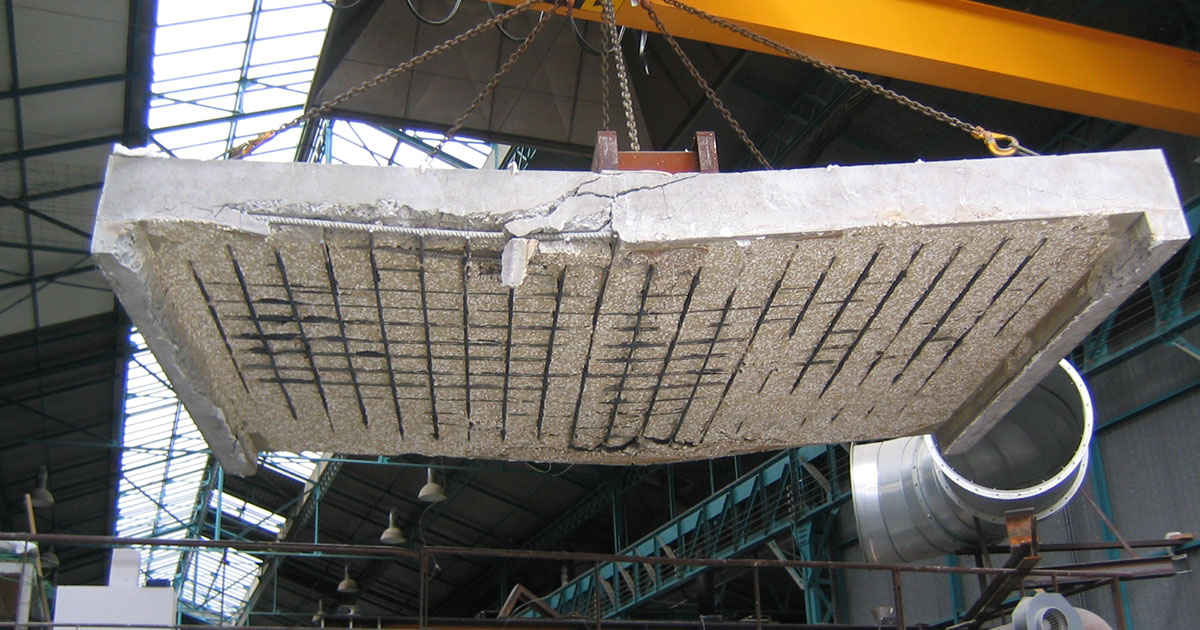Materials
The CSTB tests the high-temperature behavior of concrete used for the Grand Paris Express transit lines

Concrete structure after a fire test, Vulcain test facility at the CSTB, Champs-sur-Marne
With new and extended lines, the Grand Paris Express metro system involves the construction of many tunnels and therefore the use of various types of concrete that must meet technical performance requirements (mechanical, fire resistance, durability, etc.). Industrial companies and contractors working on the projects face two primary imperatives: choose the most appropriate concrete formulations, and assess the structures under conditions as close as possible to reality. The CSTB shares its Vulcain test facility as well as its knowledge of materials and concrete spalling due to fire exposure. Focus on this scientific and technical challenge.
1300°C reached in just minutes
The first priority is to understand the phenomenon of concrete spalling during a rapidly developing fire. This occurs particularly in tunnels where the temperature can rise quickly and reach 1300°C or higher in a few minutes. Spalling is the violent projection of pieces of concrete, of varying sizes, from the surface exposed to fire. It impairs a structure’s mechanical strength (reduced section, lower mechanical performance of the remaining concrete, exposed rebars).
Testing the risk of concrete spalling
For over 15 years, the CSTB has developed expertise in this phenomenon by designing specific test protocols for concrete specimens. In addition, it operates several large furnaces that enable the use of conventionally configured temperature curves for fires in buildings and tunnels. In the concrete selection phase, the modular furnace of the Vulcain test facility can test up to 10 concrete mixes in a single test on slabs larger than 2 m2. Endoscopic cameras record the changes across the specimens.
To reproduce real-world structures, this equipment is complemented by mechanical loading systems (cylinders, force sensors, etc.) that allow loads of up to 1000 metric tons. The testing experts modify a number of parameters (specimen type, loads applied, concrete mix and rebars) to reproduce the behavior of the concrete structures accurately.
Complex phenomenon with multiple parameters
Concrete spalling remains a complex phenomenon. So far, there are no models that can predict its occurrence and behavior. Only tests can assess the risk of spalling. Consisting of cement, sand, aggregates, additives, adjuvants and sometimes fiber, concrete is a composite material in the true sense of the term. In the vast majority of cases, it is also used in association with steel rebars. Finally, at high temperatures, complex mechanisms are at work: chemical reactions, shrinkage, cracking, water evaporation and vapor diffusion, development of internal pressures in pores, and so on.
Many parameters contribute to the risk of spalling, including concrete composition and compactness, moisture content, specimen geometry, mechanical loads applied, and use of polypropylene or other fibers. They are all used by CSTB experts to build appropriate test programs and methods and analyze results. The final goal is to make sure that the concrete used in Grand Paris Express tunnels is as safe as possible.




